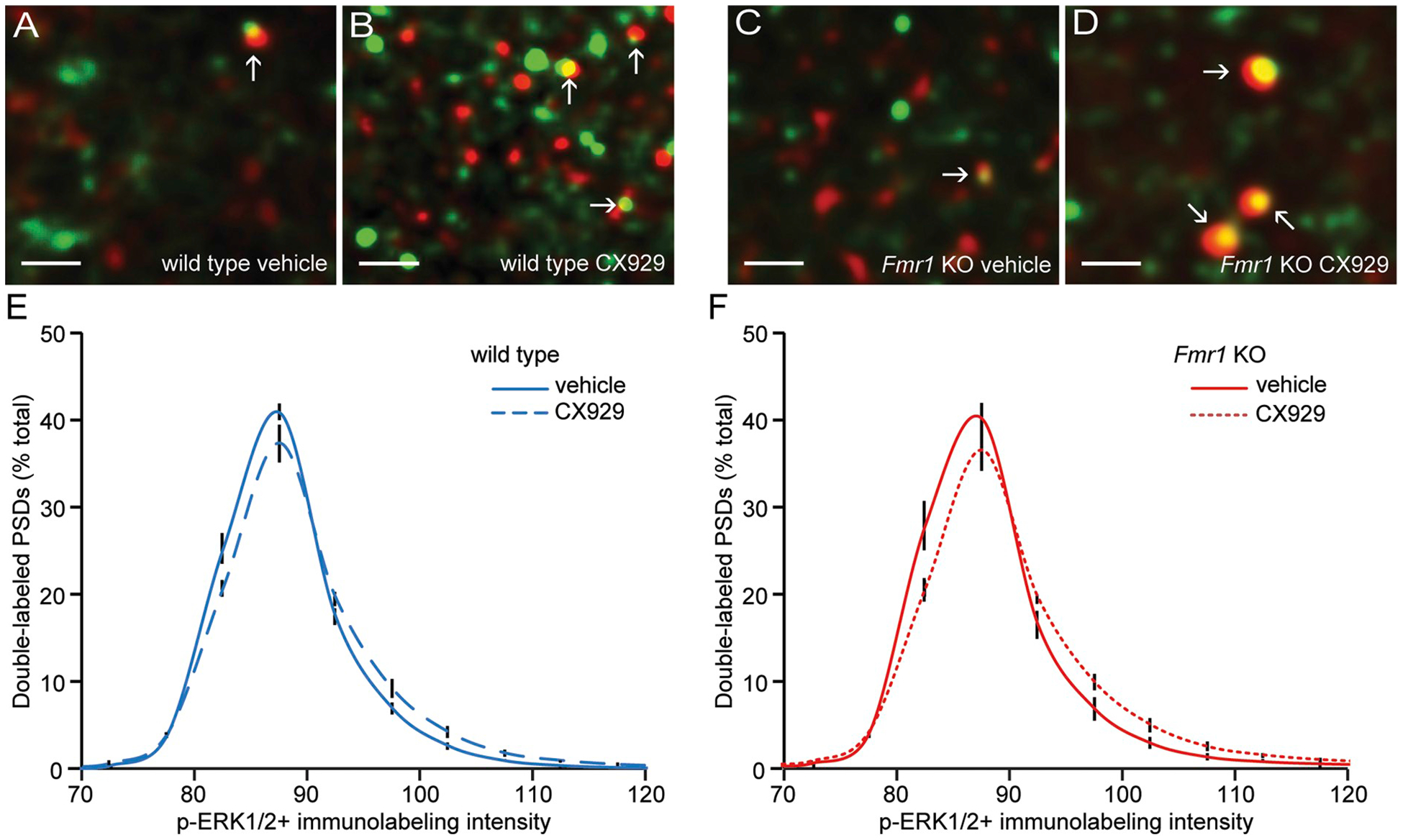Fig. 4.

The ampakine CX929 increases synaptic p-ERK1/2 in CA1 stratum radiatum in WT and Fmr1 KO mice.
Fmr1 KO mice were injected with vehicle or CX929 daily for four days and hippocampal sections were processed for dual immunolabeling and fluorescence deconvolution tomography analysis of PSD95 and p-ERK1/2 Thr202/Tyr204 17 h after the final injection (a time point corresponding to the time at which the mice would otherwise be exposed to training). A-D, Deconvolved images (bar = 1 μm) show merged immunolabeling for PSD95 (green) and p-ERK1/2 Thr202/Tyr204 (red) in the CA1b stratum radiatum from WT and Fmr1 KO mice that received vehicle or CX929. E-F, Frequency distributions for the density of p-ERK1/2 immunolabeling co-localized with PSD95 in wild type (E) and Fmr1 KO mice (F) treated with vehicle or CX929 (means ± SEMs; n = 9/group). Shown is the percentage of the total synapse-sized, double-labeled elements that fell within each bin of an ascending series of p-ERK1/2+ values. The greater rightward skew towards higher densities in the CX929 group relative to vehicle controls was significant for both genotypes (WT: two-way ANOVA: F23,391 = 3.288, P < .0001; Fmr1 KO: two-way ANOVA: F23,391 = 3.804, P < .0001).
